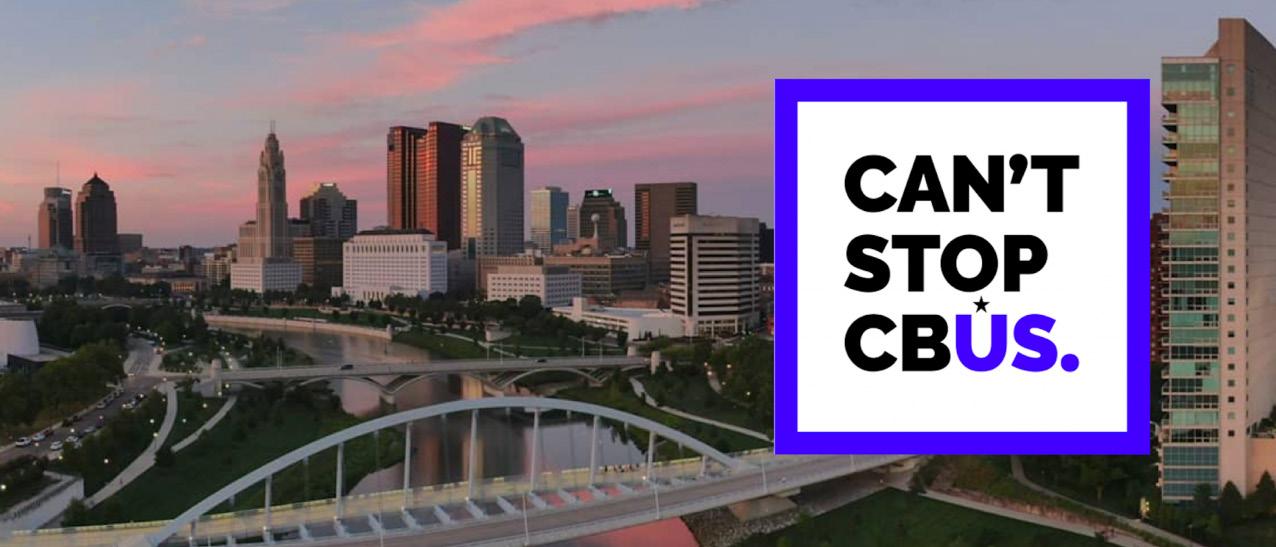
3 minute read
Smart Columbus
Smart Columbus was founded on the premise that together, our community can use technology and innovation to counter the disruptions impacting our residents and our region. This year has brought more disruption than anticipated, but the challenges provide us with new ways to think about Smart Columbus and its potential impact.
Following is a summary of Smart Columbus Q3 activities, and a look at promising initiatives that will inform the mission and scope of Smart Columbus 2.0.
USDOT PROJECTS IN LINDEN The pandemic has impacted the ways we implement projects within the U.S. Department of Transportation grant portfolio, but the team has worked to quickly pivot to continue to serve the grant’s mission to improve quality of life through access to mobility. In July, Mayor Andrew J. Ginther joined community leaders to unveil three pilots that seek to improve mobility, road safety, and community food support in Linden: • Initially closed to the public to observe social distancing policies, the Linden LEAP self-driving shuttles have been recommissioned to transport pre-packaged food boxes from St. Stephen’s Food and Nutrition Center to the Rosewind Community Center. • Installations are underway so that residents may participate in the Connected Vehicle Environment. The equipment will provide real-time safety alerts intended to help drivers make more informed decisions while driving through Linden. The pilot will also enable Smart Columbus to hire up to 10 individuals as “Connected Vehicle Technicians In-Training” during the study. • Smart Mobility Hubs are now open at Columbus State Community College, Linden Transit Center, St. Stephen’s Community House, the Columbus Metropolitan Library’s Linden Branch, COTA’s Northern Lights Park and Ride, and Easton Transit Center.
ELECTRIFICATION AND DECARBONIZATION Smart Columbus has partnered with AEP Energy to establish a community grant program whereby a portion of the income from the City of Columbus’ Community Choice Aggregation program will be dedicated to achieving the city’s carbon reduction goals. These funds have the potential to fund continued Smart Columbus programming in the arenas of electrification, residential solar generation, residential energy efficiency in opportunity neighborhoods and more.
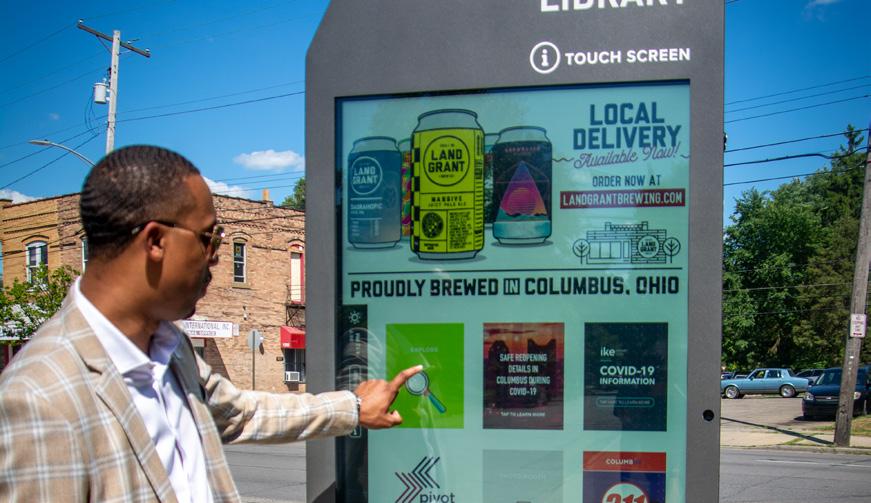
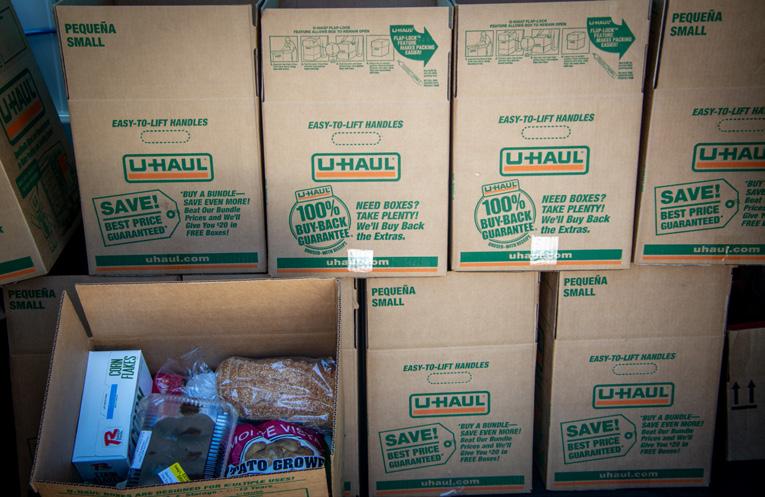
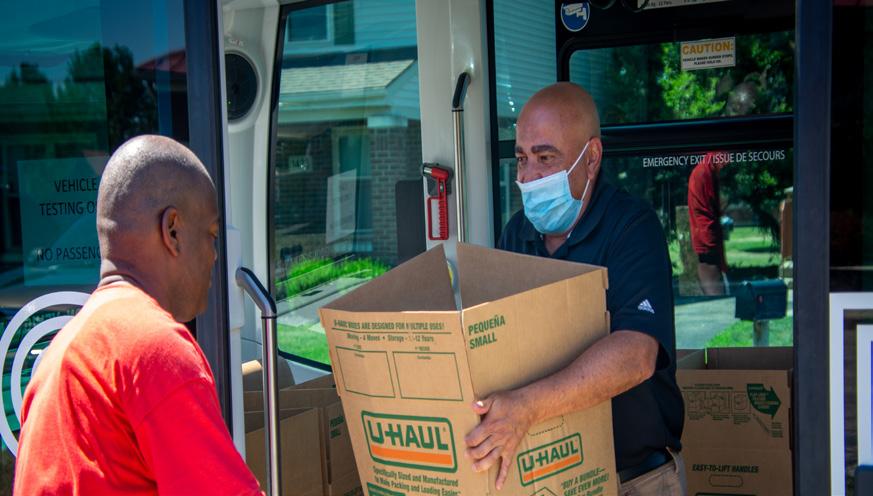
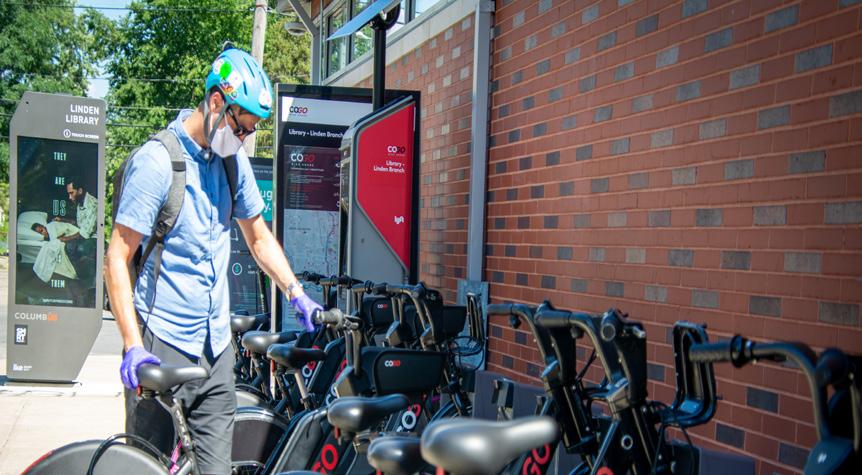
Smart Columbus has also earned approval from the Public Utilities Commission of Ohio (PUCO) to act as an Energy Aggregator and Power Broker. Corporate and industrial organizations can now purchase Retail Renewable Energy from Smart Columbus Energy just as they purchase traditional energy today, and at a cost that is comparable to current electricity prices, which are at a historic low. With the commitments we secure, AEP Energy is investing in new wind and solar projects in the state of Ohio to fulfill the energy demand. The brokerage fee paid to Smart Columbus Energy is used to fund initiatives in pursuit of prosperity for Central Ohio residents.
SMART COLUMBUS 2.0
The team has worked with Mayor Ginther’s office and our Executive Committee to develop a framework for the next evolution of Smart Columbus. As we look to the future, we see sustainability, connectivity and innovation as key focus areas.
SMART COLUMBUS (cont.)
NEW POWER MODEL FOR COMMUNITY SERVICE
To further advance the innovation response to community problems, Can’t Stop Columbus is exploring how to leverage the skilled talent in our partner companies to develop technology solutions. Skilled volunteering can enable our region to rapidly address immediate needs and also deliver solutions that create long-term efficiencies and solve problems for the long-term. We look forward to working with Partnership companies on this in the months ahead.
Can’t Stop Columbus also participated in intensive training with The Columbus Foundation to better learn how to leverage human-centered design to benefit the people of our region.
